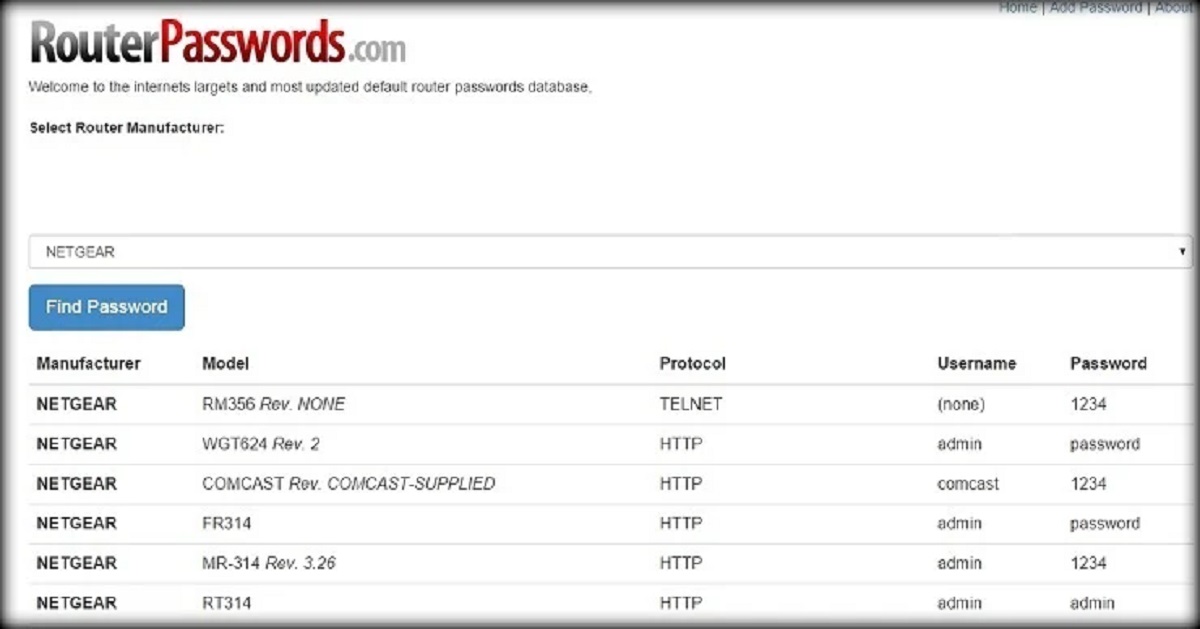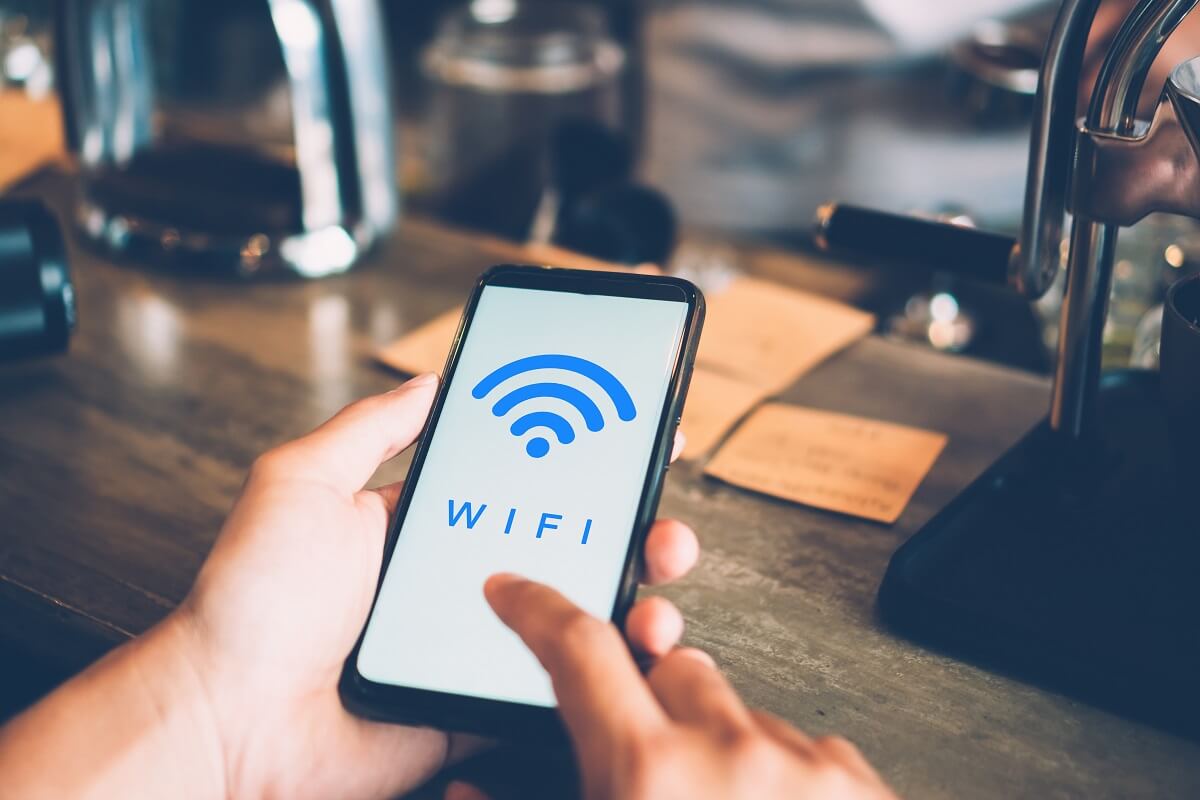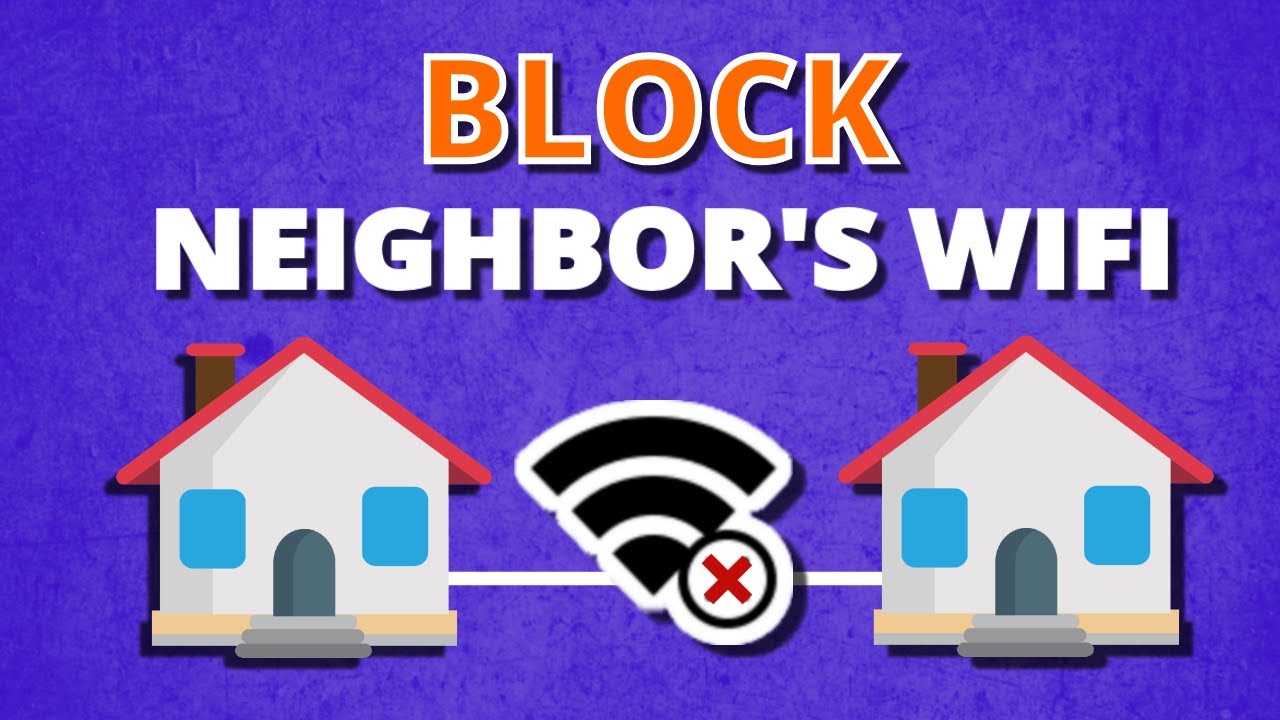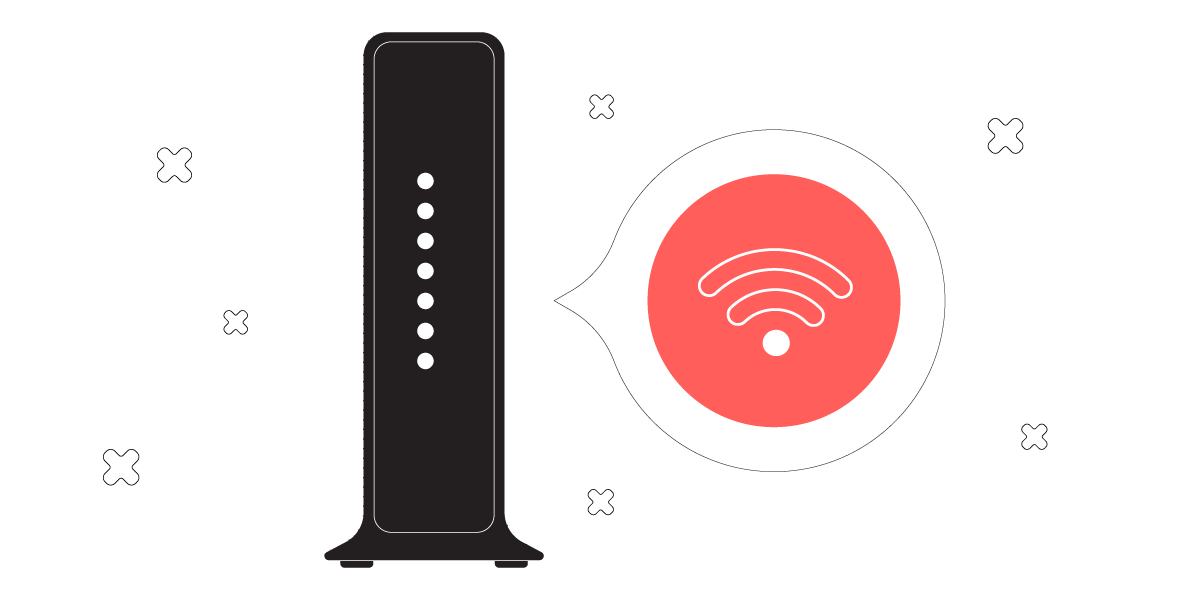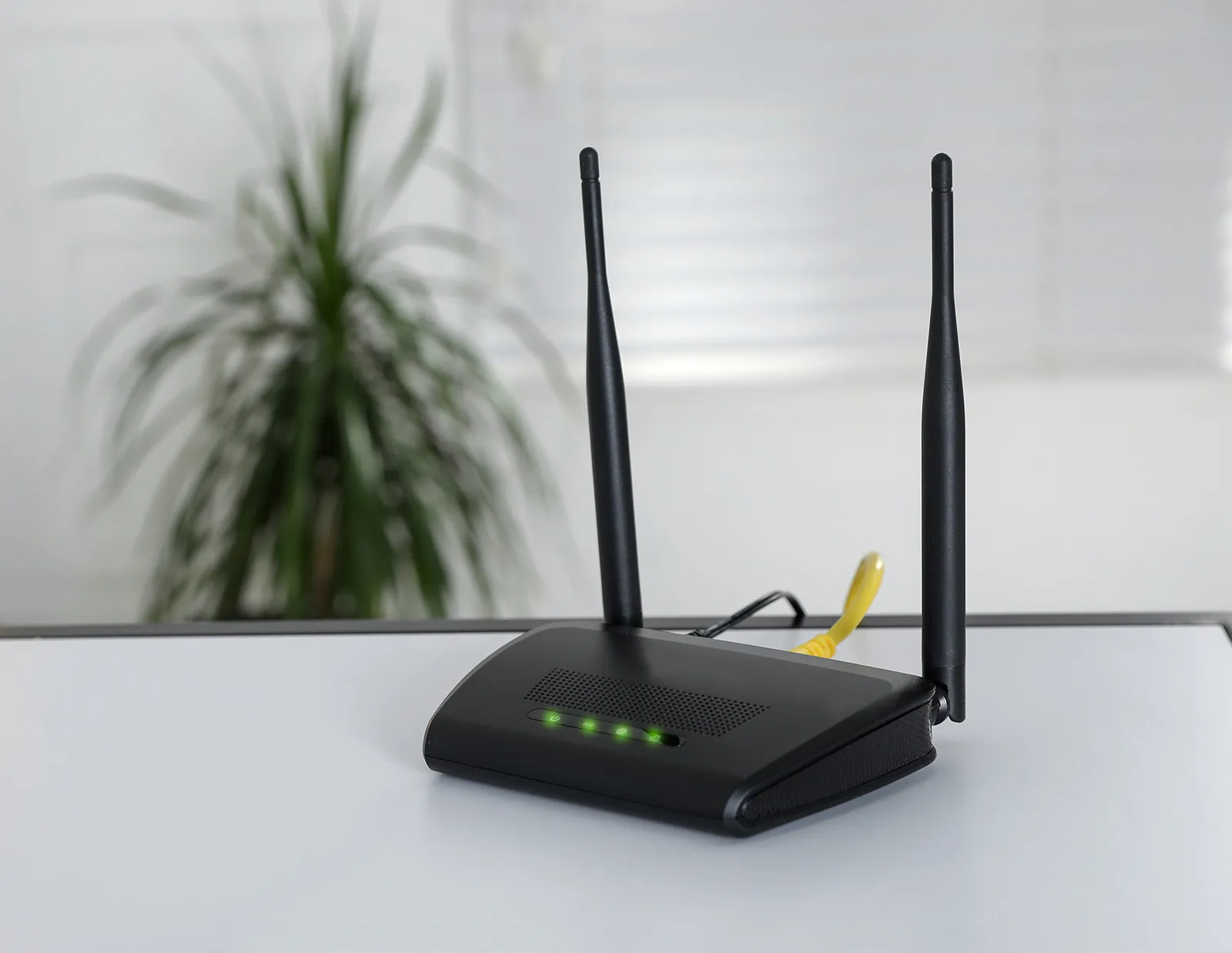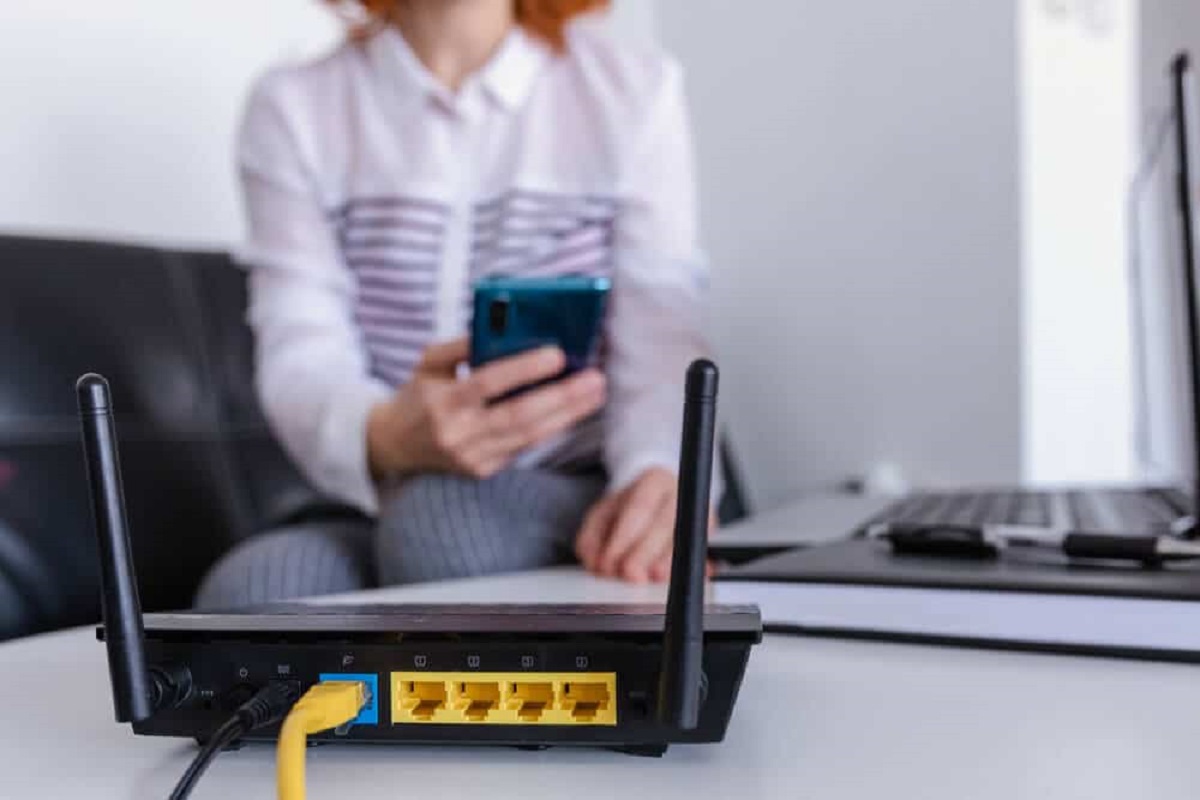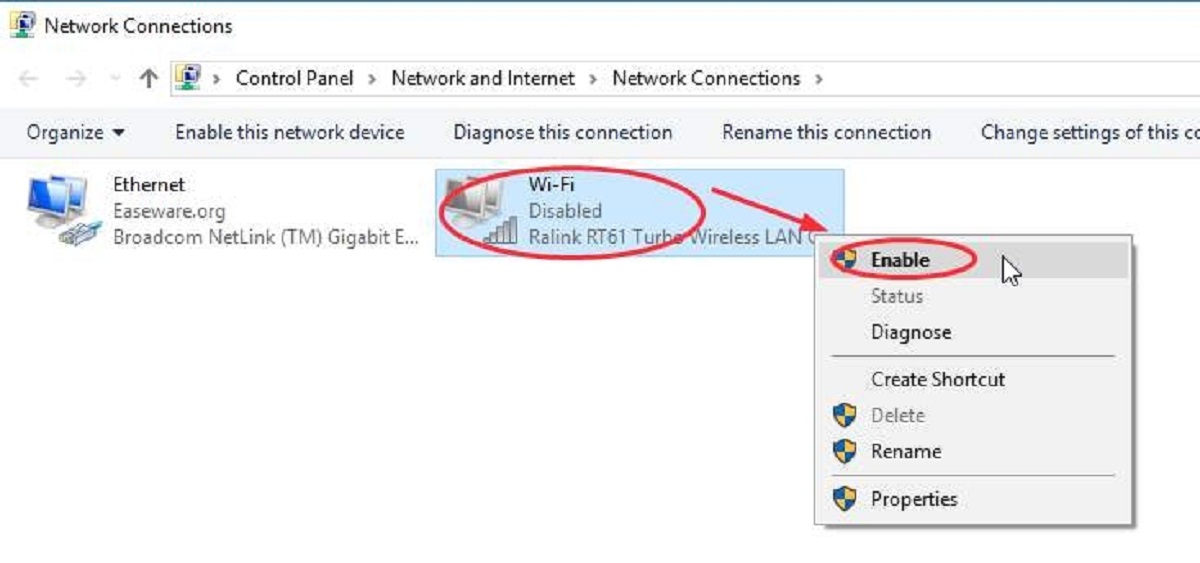Introduction
Welcome to the world of Wi-Fi hacking! In this digital era, where technology has become an integral part of our lives, having access to a fast and reliable internet connection is vital. While most of us have our own Wi-Fi networks at home, there may be times when you find yourself in need of internet access without a network of your own. In such situations, some individuals may be tempted to try and obtain the Wi-Fi password of their neighbors to get online. However, before delving into this subject, it is important to understand the legal and ethical considerations surrounding this practice.
Obtaining someone’s Wi-Fi password without their consent is generally considered both illegal and unethical. The unauthorized access to someone’s network violates their privacy and could lead to serious legal consequences. Therefore, it is crucial to approach this topic from an educational standpoint, rather than encouraging any illegal activities. This article aims to provide insights into the techniques used by hackers and individuals with malicious intent to gain unauthorized access to Wi-Fi networks. By understanding their methods, you can better protect your own network from potential threats.
Note: The purpose of this article is to raise awareness about Wi-Fi security and to help individuals understand the importance of securing their own networks. It does not endorse or encourage any illegal activities.
Understanding the Legal and Ethical Considerations
Before delving into any activities related to hacking or obtaining someone’s Wi-Fi password, it is crucial to understand the legal and ethical implications associated with these actions. While the temptation to gain access to your neighbor’s Wi-Fi network may be strong, it is essential to respect their privacy and adhere to the laws governing digital activities.
Unauthorized access to someone’s Wi-Fi network is considered a violation of their privacy and can have severe legal consequences. In many jurisdictions, it is a criminal offense punishable by law. Engaging in such activities can result in hefty fines, jail time, or both, depending on the laws of your country or state.
Not only is hacking into someone’s Wi-Fi illegal, but it is also highly unethical. By gaining unauthorized access to a network, you are infringing upon the privacy of the network owner. They have the right to control who has access to their internet connection and what activities are conducted on it.
Respecting the ethical considerations extends beyond just legal boundaries. It is essential to understand that compromising someone’s network security can have severe consequences for them, both in terms of privacy and potential exposure to cyber threats. By gaining access to a network, hackers could potentially intercept private data, such as personal information or financial details.
It is worth mentioning that hacking into Wi-Fi networks, even for educational purposes, can be seen as condoning illegal activities. It is always best to focus on improving your understanding of cybersecurity and promoting ethical practices to safeguard your own network. In the following sections, we will explore various techniques used to crack Wi-Fi passwords. However, it is important to note that these methods should only be used within the boundaries of the law, such as by network administrators for testing the security of their own networks or with explicit permission from the network owners.
By understanding the legal and ethical considerations, we can ensure that we approach the topic of Wi-Fi hacking responsibly and promote a secure digital environment for everyone.
Determining the Neighbor’s Network Name
Before attempting to obtain your neighbor’s Wi-Fi password, the first step is to determine the network name (SSID) of their Wi-Fi network. The SSID is the name that appears when you scan for available networks on your device. Here are a few methods to discover the network name:
- Wi-Fi Scanners: Use Wi-Fi scanning tools such as NetSpot, WiFi Analyzer, or Acrylic Wi-Fi Home to detect nearby Wi-Fi networks. These tools provide a list of available networks, including the SSID of your neighbors’ networks.
- Wireless Routers: Some wireless routers have a feature that allows you to view nearby Wi-Fi networks. Access your router’s admin panel by typing its IP address into your web browser. Once logged in, navigate to the Wi-Fi or Wireless settings page, where you may find an option to display nearby networks.
- Smartphone Apps: There are smartphone apps available for both Android and iOS devices that can scan for nearby Wi-Fi networks. Apps like Fing or Network Analyzer provide detailed information about nearby networks, including the SSID.
It is important to note that these methods are meant for informational purposes only. They should be used responsibly and within the boundaries of the law. Remember, attempting to gain unauthorized access to a Wi-Fi network is both illegal and unethical.
Once you have successfully determined your neighbor’s network name, you can move on to the next step, which involves scanning for available networks to identify potential targets.
Scanning for Available Networks
Now that you have identified the network name (SSID) of your neighbor’s Wi-Fi network, the next step is to scan for available networks in your vicinity to identify potential targets. Scanning for networks allows you to gather information about nearby Wi-Fi networks, including their signal strength and security settings.
Here are a few methods you can use to scan for available networks:
- Wi-Fi Scanning Applications: Use Wi-Fi scanning applications such as NetSpot, inSSIDer, or Vistumbler to discover nearby Wi-Fi networks. These applications provide a comprehensive list of available networks and display important details such as the network name (SSID), signal strength, encryption type, and channel information.
- Operating System Tools: Most operating systems have built-in tools that allow you to scan for available networks. For example, on Windows, you can use the command prompt and enter the following command:
netsh wlan show networks mode=bssid. On macOS, you can access the Wi-Fi menu and select “Open Network Preferences” to view nearby networks. - Smartphone Wi-Fi Settings: You can also use the Wi-Fi settings on your smartphone to scan for nearby networks. Open the Wi-Fi settings on your device and wait for it to display the list of available networks. This will provide you with an overview of the neighboring Wi-Fi networks in your area.
Once you have scanned for available networks, you can analyze the gathered information to identify potential targets for further exploration. Look for networks that have weak security measures or default passwords, as these can be more vulnerable to hacking attempts. However, it is crucial to remember that attempting to gain unauthorized access to a Wi-Fi network is illegal and unethical.
Keep in mind that determining the security level of a network based solely on its SSID or signal strength is not always accurate. It is recommended to use legal and ethical methods to secure your own network and avoid engaging in any illicit activities related to Wi-Fi hacking.
In the next section, we will explore default router passwords and how they can be exploited to gain access to Wi-Fi networks.
Exploring Default Router Passwords
Default router passwords can be a potential vulnerability for Wi-Fi networks, as many people do not change the default credentials provided by the manufacturer. This makes it easier for attackers to gain unauthorized access to these networks. In this section, we will explore how default router passwords can be exploited to gain access to Wi-Fi networks.
When you purchase a new router, it usually comes with a default username and password combination. This information is often readily available in the router’s documentation or can be easily found online. Unfortunately, many users neglect to change these default credentials, leaving their Wi-Fi networks vulnerable to attacks.
Attackers can take advantage of this by using tools that automatically scan for routers with default credentials. Once they find a vulnerable router, they can log in using the default username and password combination. From there, they can gain access to the router’s settings and manipulate various network settings, including the Wi-Fi password.
To protect your own network from such attacks, it is crucial to change the default username and password of your router. This can usually be done by accessing your router’s admin panel through a web browser and navigating to the appropriate settings. Choose a strong password that is unique and not easily guessable. Avoid using common words or personal information that can be easily associated with you.
It is worth noting that attempting to exploit default router passwords without the owner’s consent is illegal and unethical. This section is intended to raise awareness about the risks associated with default passwords and emphasize the importance of securing your Wi-Fi network.
In the next section, we will explore various tools and techniques used to crack Wi-Fi passwords.
Utilizing Tools to Crack Wi-Fi Passwords
Cracking Wi-Fi passwords is a common technique used by hackers to gain unauthorized access to Wi-Fi networks. While it is essential to understand the methods used for cracking Wi-Fi passwords, please note that the information provided here is for educational purposes only. Engaging in any illegal activities, including attempting to crack Wi-Fi passwords without proper authorization, is both against the law and unethical.
There are various tools and techniques used to crack Wi-Fi passwords, and some of them are as follows:
- Brute Force Attacks: Brute force attacks involve systematically checking all possible password combinations until the correct one is found. This method can be time-consuming and requires significant computing power.
- Dictionary Attacks: Dictionary attacks involve using a precompiled list of commonly used passwords or words from the dictionary to attempt to crack the Wi-Fi password. This method relies on the fact that many users choose weak and easily guessable passwords.
- Hybrid Attacks: Hybrid attacks combine elements of both brute force and dictionary attacks. This method tries various combinations of words from the dictionary along with additional characters or numbers.
- Wi-Fi Password Cracking Tools: There are several Wi-Fi password cracking tools available, such as Aircrack-ng, Hashcat, and Fern Wi-Fi Cracker, which automate the process of cracking Wi-Fi passwords.
While these tools can be used for legitimate purposes such as testing the security of your own network or with explicit permission from the network owner, it is essential to use them responsibly and within legal boundaries.
To protect your Wi-Fi network from these types of attacks, it is crucial to choose a strong password that consists of a combination of upper and lowercase letters, numbers, and special characters. Additionally, regularly updating your Wi-Fi router’s firmware can help patch any vulnerabilities that may exist.
Awareness about Wi-Fi security is paramount, and understanding the techniques used by hackers can help you better protect your own network and stay vigilant against potential threats.
In the next section, we will explore social engineering techniques and how they can be used to exploit Wi-Fi networks.
Social Engineering Techniques
Social engineering is a technique used by hackers to manipulate individuals into revealing sensitive information or granting access to their Wi-Fi networks. It relies on psychological manipulation rather than technical skills. In this section, we will explore some common social engineering techniques used to exploit Wi-Fi networks.
1. Pretexting: Pretexting involves creating a fictional scenario or pretext to convince the target to provide the Wi-Fi password. For example, the attacker might pretend to be a technician from the internet service provider (ISP) and claim that they require the Wi-Fi password for maintenance purposes.
2. Phishing: Phishing is a well-known social engineering technique that involves sending emails, messages, or calls pretending to be a legitimate entity, such as the ISP, and asking the victim to provide their Wi-Fi password for account verification or security reasons. The attacker may include a link that directs the victim to a fake login page designed to harvest their credentials.
3. Baiting: Baiting involves luring targets into providing their Wi-Fi passwords by offering something that they desire. For example, an attacker might leave a USB drive labeled as “Wi-Fi Optimization Tools” in a public place, hoping that someone will pick it up and plug it into their computer. In reality, the USB drive contains malware that captures the Wi-Fi password when inserted.
4. Impersonation: Impersonation is another social engineering technique where an attacker pretends to be someone else, such as a neighbor or a delivery person, and requests the Wi-Fi password in order to connect to the network temporarily. This technique relies on the victim’s trust and willingness to help others.
It is crucial to be cautious and skeptical when approached by individuals asking for your Wi-Fi password or any other sensitive information. Always be aware of the potential risks and verify the identity of the person or organization making the request before sharing any confidential data.
To protect yourself from falling victim to social engineering attacks, educate yourself and your family members about these techniques. Be vigilant, and if you encounter suspicious requests or interactions, report them to the appropriate authorities or your ISP.
Remember, prevention is key to maintaining the security of your Wi-Fi network and personal information. In the next section, we will explore the Wi-Fi Pineapple, a powerful hacking tool that can exploit Wi-Fi networks.
Wi-Fi Pineapple: A Powerful Hacking Tool
The Wi-Fi Pineapple is a powerful hacking tool that can be used to exploit Wi-Fi networks. It is a specialized piece of hardware that allows attackers to intercept and manipulate network traffic, enabling them to gain unauthorized access to Wi-Fi networks. In this section, we will explore the capabilities of the Wi-Fi Pineapple and the potential risks it poses to network security.
The Wi-Fi Pineapple is designed to perform various attack techniques, including:
- Wireless Network Sniffing: The Wi-Fi Pineapple can passively monitor and capture network traffic, allowing attackers to intercept sensitive information such as login credentials and personal data.
- Evil Twin Attack: With the Evil Twin attack, the Wi-Fi Pineapple creates a rogue access point that mimics a legitimate network. When unsuspecting users connect to the rogue access point, the attacker can intercept their traffic and potentially gain access to sensitive information.
- Deauthentication Attack: The Wi-Fi Pineapple can send deauthentication frames to disconnect devices from their legitimate Wi-Fi networks. This can be used to force devices to connect to the attacker’s rogue access point.
- Man-in-the-Middle Attack: By intercepting and relaying network traffic, the Wi-Fi Pineapple can facilitate a man-in-the-middle attack. This allows attackers to eavesdrop on communications, modify data sent between devices, or even inject malicious code.
It is important to note that the Wi-Fi Pineapple is a specialized hacking tool and should only be used by network administrators for legitimate security testing, with proper authorization, or for educational purposes to understand and strengthen network defenses. Utilizing the Wi-Fi Pineapple without consent for malicious activities is illegal and unethical.
To protect your Wi-Fi network from potential attacks using the Wi-Fi Pineapple or similar devices, there are a few proactive measures you can take:
- Use Strong Encryption: Ensure your Wi-Fi network is using WPA2 or WPA3 encryption, as these protocols provide stronger security compared to outdated options like WEP.
- Change Default Credentials: Always change the default username and password of your router’s admin panel to prevent unauthorized access.
- Keep Firmware Updated: Regularly update your router’s firmware to patch any security vulnerabilities.
- Disable SSID Broadcasting: Disable the broadcasting of your Wi-Fi network’s SSID to make it less visible to potential attackers.
By taking these precautions, you can significantly enhance the security of your Wi-Fi network and reduce the risk of being targeted by the Wi-Fi Pineapple or similar hacking tools.
In the next section, we will discuss the importance of protecting your own Wi-Fi network from unauthorized access.
Protecting Your Own Wi-Fi Network
Securing your own Wi-Fi network is of utmost importance to ensure the privacy and protection of your personal information. By implementing proper security measures, you can significantly reduce the risk of unauthorized access and potential cyber threats. In this section, we will discuss key steps to protect your Wi-Fi network.
1. Change Default Credentials: The first step in securing your Wi-Fi network is to change the default username and password of your router’s admin panel. Use a strong, unique password that includes a combination of upper and lowercase letters, numbers, and special characters.
2. Implement Strong Encryption: Secure your Wi-Fi network with strong encryption protocols such as WPA2 or WPA3, as these provide better protection compared to outdated options like WEP. This ensures that the data transmitted over your network is encrypted and cannot be easily intercepted.
3. Use a Strong Wi-Fi Password: Choose a strong Wi-Fi password that incorporates a mix of upper and lowercase letters, numbers, and special characters. Avoid using easily guessable passwords or personal information that can be associated with you. The longer and more complex the password, the harder it is to crack.
4. Enable Network Firewall: Activate the built-in firewall on your router to monitor and filter incoming and outgoing network traffic. This helps protect against unauthorized access and potential attacks.
5. Disable Remote Management: Disable remote management features on your router to prevent unauthorized access to its settings from outside of your network. This reduces the risk of tampering with network security settings.
6. Regularly Update Firmware: Keep your router’s firmware up to date to ensure that you have the latest security patches and bug fixes. Check your router manufacturer’s website periodically for updates and install them promptly.
7. Enable MAC Address Filtering: MAC address filtering allows you to create a whitelist of devices that can connect to your network. Only devices with approved MAC addresses will be able to access your Wi-Fi network.
8. Disable SSID Broadcasting: Disabling the broadcasting of your Wi-Fi network’s SSID makes it less visible to potential attackers. While this does not provide foolproof security, it adds an additional layer of obscurity.
By implementing these security measures, you can significantly enhance the protection of your Wi-Fi network. It is important to remain vigilant and stay informed about emerging threats and security best practices.
Remember, securing your Wi-Fi network not only safeguards your personal information but also helps create a safer online environment for everyone connected to your network. In the next section, we will conclude our discussion on Wi-Fi security.
Conclusion
Wi-Fi hacking is a serious concern in today’s digital landscape, and it is important to understand the risks associated with unauthorized access to Wi-Fi networks. Throughout this article, we have explored various aspects of Wi-Fi security, including legal and ethical considerations, techniques employed to crack Wi-Fi passwords, social engineering tactics, and the Wi-Fi Pineapple as a powerful hacking tool.
It is crucial to remember that engaging in any illegal activities, such as attempting to gain unauthorized access to Wi-Fi networks without consent, is both against the law and unethical. The purpose of discussing these techniques is to raise awareness and promote a responsible approach to Wi-Fi security.
To protect your own Wi-Fi network, it is essential to implement strong security measures, including changing default credentials, using strong encryption, and keeping your router’s firmware up to date. Additionally, being cautious of social engineering tactics and staying informed about emerging threats can help safeguard your network against potential attacks.
Lastly, it is important to promote a culture of ethical behavior when it comes to Wi-Fi security. Respecting the privacy and security of others’ networks is crucial for maintaining a safe digital environment for everyone.
By understanding the potential risks and taking proactive steps to secure your Wi-Fi network, you can ensure the privacy and protection of your personal information and contribute to a more secure online community.







